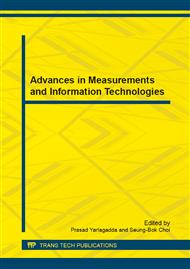[1]
David N. Perkins, Darryl JCPappin, David M. Creasy, John S. Cottrell. Probability-based protein identification by searching sequence databases using mass spectrometry data. 1999 , 20: 3551-3567.
DOI: 10.1002/(sici)1522-2683(19991201)20:18<3551::aid-elps3551>3.0.co;2-2
Google Scholar
[2]
Jimmy K. Eng, Ashley L. McCormack, John R. Yates III. An approach to correlate tandem mass spectral data of peptides with amino acid sequences in a protein database. 1994, 5: 976-989.
DOI: 10.1016/1044-0305(94)80016-2
Google Scholar
[3]
Garnak, M. Reeves, HCPhosphorylation of isoctrate dehydrofenase of Escherichia coli. Science, 1979, 203 (4385) : 1111-1112.
DOI: 10.1126/science.34215
Google Scholar
[4]
Cohen, P. The regulationof protein function by multisite phosphorylation—a 25 year update. Trends Biochem. Sci., 2000, 25: 596-601.
DOI: 10.1016/s0968-0004(00)01712-6
Google Scholar
[5]
Wifred H. Tang, Ignat V. Shilov, Sean L. Seymour. Nonlinear Fitting Method for Determining Local False Discovery Rates from Decoy Database Searches [J]. Journal of Proteome Research, 2008, 7: 3661-3667.
DOI: 10.1021/pr070492f
Google Scholar
[6]
Jseper V. Olsen, Matthias Mann. Improved peptide identification in proteomics by two consecutive stages of mass spectrometric fragmentation [J]. PNAS, 2004, 101: 13417-13422.
DOI: 10.1073/pnas.0405549101
Google Scholar
[7]
Sean A Beausoleil, Judit Villen, Scott A Gerber, John Rush, Steven P Gygi. A probability-based approach for high-throughput protein phosphorylation analysis and site localization [J]. Nature biotechnology, 2006, 24: 1285-1292.
DOI: 10.1038/nbt1240
Google Scholar
[8]
MacCoss, M.J. Computational analysis of shotgun proteomics data. Chem. Biol. 2005, 9: 88-94.
Google Scholar
[9]
Peng,J., Elias J.E., Thoreen C.C., Licklider L.J. &Gygi S.P. Evaluation of multidimensional chromatography coupled with tandem mass spectrometry(LC/LC-MS/MS) for large-scale protein analysis: the yeast proteome. J. Proteome Res. 2003, 2: 43-50.
DOI: 10.1021/pr025556v
Google Scholar
[10]
Elias J.E., Gibbons F.D., King O.D., Roth F.P. &Gygi S.P. Intensity-based protein identification by machine learning from a library of tandem mass spectra. Nat. Biotechnol. 2004, 22: 214-219.
DOI: 10.1038/nbt930
Google Scholar


